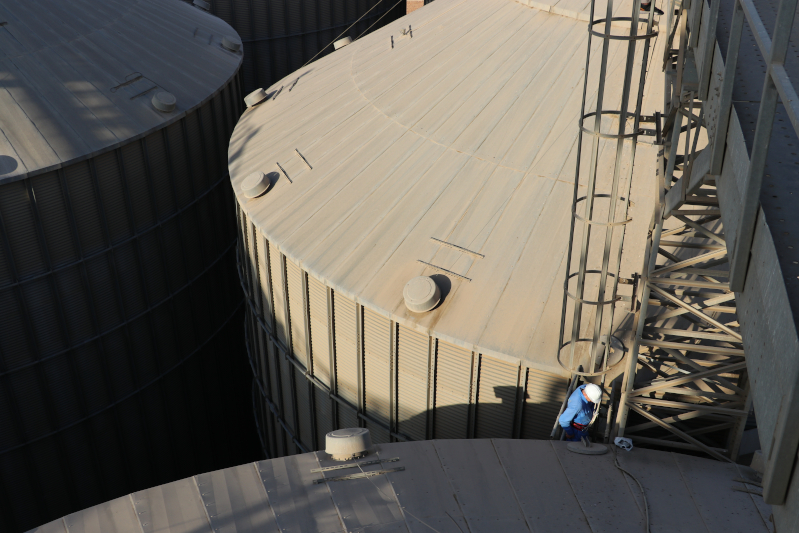Mitigating risks from pests in Egypt’s grain supplies

Learning to fight back better against pests
This month, in coordination with the Egyptian Holding Company for Silos and Storage (EHCSS), a series of training courses took place in Cairo on best practices for pest management in stored grains. The training was part of a FAO/EBRD programme to improve food security in the Southern and Eastern Mediterranean (SEMED) region where grains are an important staple. In Egypt alone, wheat accounted for 75 percent of the country’s USD 15 billion food import bill in 2021 and accounts for 32 percent of Egypt’s food calorie supply.
“The war in Ukraine and related food supply shocks have underscored the need to better manage and monitor storage conditions for local and imported grains and oilseeds to reduce food losses,” explains Dmitry Prikhodko, Senior Economist. “This requires a good understanding of pest management processes during cereal transportation and storage along with the real-time monitoring of grain condition using wireless technologies and sensors to minimize losses and ensure efficient storage and flows.”
From the classroom to the silo
The FAO team partnered with EHCSS to train 150 participants, including grain storage, mill management and grain fumigation professionals. Government technical specialists from the EHCSS and the Central Administration for Plant Quarantine (CAPQ) also took part.
Topics covered included the integrated protection of stored grain, with emphasis on the efficacy and safety of the fumigation techniques that can be applied in Egyptian grain storage facilities and imported cargo during transit. The trainers presented best practices in identifying insect species, in particular those that can inflict serious economic damage, and addressing issues related to pest tolerance.
A practical demonstration at one of the EHCSS silos to start putting theory into action included experts presenting wireless technology to monitor carbon dioxide, humidity and temperature levels. They also performed a live wireless sensor installation on a functioning grain silo and demonstrated how to collect and manage data to prevent grain losses. Rapidly evolving wireless sensor technologies, which are becoming less and less costly, now provide more options to monitor grain conditions compared to traditional wired sensors.
Speaking about the enhanced experience of his staff, General Sherif Bassily, Chairman and CEO of EHCSS, commented, “We are dedicated to strengthening the long-term resilience of our grain storage system, increasing the capacity of our silos for strategic reserves and reducing losses at all levels from transport to testing and handling of grains. The continuous improvement of EHCSS staff’s skills is essential for our mission to provide enough food staples to the Egyptian people.”
A public-private partnership for a better managed future of pest control
The training courses, in addition to building much-needed capacity, brought together public and private sector stakeholders in a shared mission – to reduce avoidable losses and thus strengthen food and livelihood security.
“To get ahead of pests, it is critical that capacity building in the grain sector is stepped up along with investments to upgrade facilities, equipment, and transportation,” said Mohamed Mansour, Principal Banker, Agribusiness, the EBRD. “This means ongoing and sustained collaboration between public and private enterprises working together as they have during this initiative to ensure Egypt’s grain supplies keep flowing.”
For more on the project, please see Agtivate.
